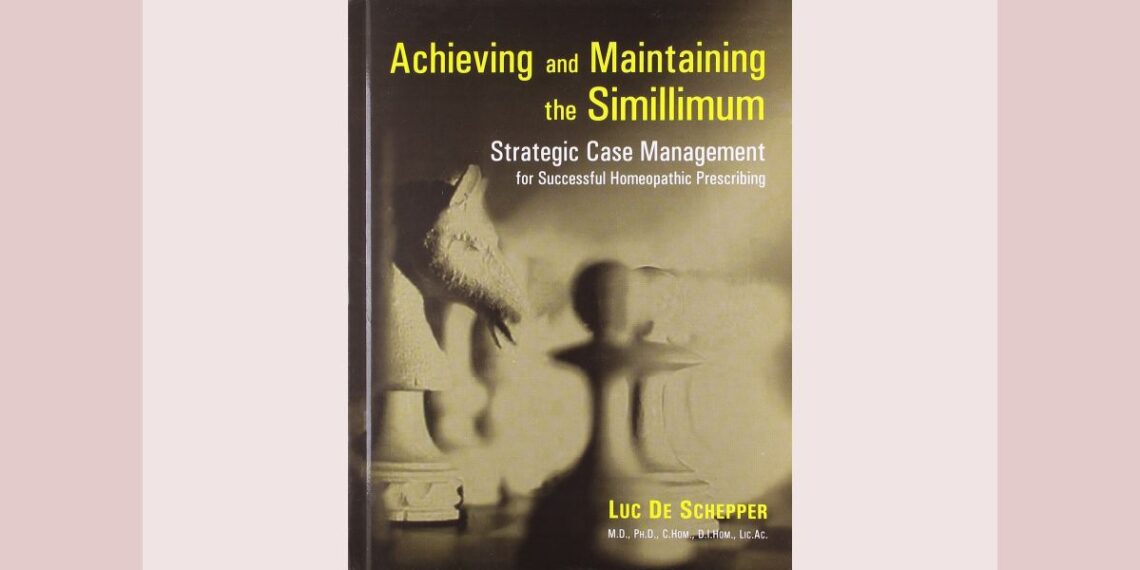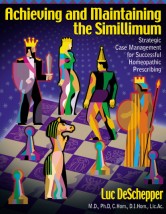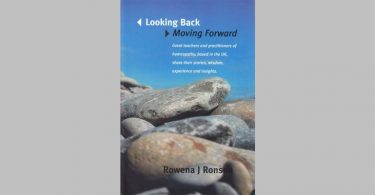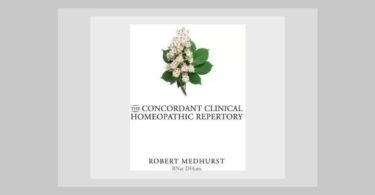Author: Luc De Schepper
Publisher: Full of Life Publishing, Santa Fe New Mexico
ISBN: 0942501144. hardback 370 pages
Price: $75 (Low Price Edition Available for India)
Reviewed By: Francis Treuherz
—————————————
I believe that when homeopaths adopt short cuts like putting more than one remedy into the same pill, or different remedies in the same day or week, before evaluation, for a chronically ill patient, it is because they have not been able to grasp the homeopathic method. Our colleges teach theories but perhaps insufficient methodology so that we misunderstand the philosophy. They are happy to teach the latest ideas which are as yet unproven over time, and adopt titles like ‘practical’ or ‘contemporary’ which signify modernity and imply something pejorative, or downgrade the idea of ‘classical’. Electronic machinery is used for diagnosis, biofeedback, allergy testing, and even the simulation of remedies which have until now been prepared by pharmacies. It is the allopaths who make antiques of their textbooks every 5 years. Ours can and should last longer than that. Inexpensive reprints from India are there for most of our classics, with a few gaps which I shall mention.
Continuing professional development (CPD) seems increasingly to focus on counselling and psychological techniques for unravelling the practitioner / patient relationship rather than unravel the reactions of the patient in the light of homeopathic methods. There is also a focus on attending seminars and meetings as the best way to fulfil CPD.
Here is a wondrous new book which will at once become the best basic textbook of methodology for students of homeopathy, and the best CPD for even the most experienced practitioner. If Dr Luc’s earlier book, Hahnemann Revisited, presented the science of homeopathy this book presents the art. The author has painstakingly analysed Hahnemann’s later works, and then analysed the work of his most famous and influential followers whether long gone like Lippe or Kent, or recent like Vithoulkas or Sankaran, in the light of his discoveries. How Hahnemann really selected and managed potency between the 4th, 5th and 6th editions , is explored in detail, between different editions of the Organon; the implication is that many of us, including Vithoulkas, are actually using the methods of Hahnemann’s 4th Organon (1828) not even the 5th (1833) or 6th (posthumous – 1922 / 1982 /1996).
Let me elaborate on this statement:
Firstly Dr Luc may make remarks about other homeopaths as I have quoted but they are definitely not ad hominem, they are not in any way personal attacks, they are observations on practice methods.
Secondly it is not only potency, but a long list of topics which are analysed:
Similar and Dissimilar Diseases;
Primary and Secondary Action;
Potency Selection in Chronic Diseases;
The Significances of Accessory Symptoms and Related Problems;
External Symptoms or Local Diseases – The Problem of Suppression;
Modern Homeopathic Myths and Misconceptions;
Lifestyle and Other Obstructions to the Cure;
Acute Intercurrent or Intermediate Remedies, and Chronic Intercurrent Remedies or Nosodes in Chronic Diseases;
The Second Prescription – Different Scenarios for the Second and Subsequent Prescriptions in the Management of Chronic Diseases;
Complementary Remedies and Remedies That Follow Well, Compatible Remedies;
Clinical Examples of Management;
Hahnemann’s Paris Casebooks (1835-1843);
Responses After the Test Dose;
Sample Remedy Instructions;
Thirdly the book is clear and very readable, this look at theory in practice could be very heavy but the text is broken up with questions and answers, with cases, with references to short quotations, especially of aphorisms from the Organon. There are many diagrams.
Fourthly there are many details, too many for this short review, such as an analysis of the origins of the classic 19c ‘wait and watch’ single dose method and ideas on how to avoid disastrous results for the patient.
There are some flaws, (not many) but I am sure if the author agrees with me, he will correct them in the second edition, as I am sure that there will have to be one. And I shall help him if he asks me. I do not wish to appear disputatious, but to exemplify how conscientious Dr. Luc has been in his research; he has studied papers from the Hahnemann archive in Stuttgart, and worked hard to disentangle a complex web of ideas.
There is a disclaimer at the start that there are many references to reprinted editions of old books, and the true dates are in the bibliography. The bibliography actually refers to the modern reprints on which most readers will have to rely. But the flaws in our practice originate in our lack of knowledge of the epistemology of our own subject. As an example, the 4th Organon of 1828 was translated in 1833 in Dublin and as a reprint became the first (and 2nd and 3rd and 4th) American edition and the one upon which Hering and Kent relied. The 1833 Organon was translated by Dudgeon in 1849 in London, and 1875 in America by Wesselhoeft. So it was reliance on earlier work of Hahnemann that has led us astray, and which Dr. Luc is here correcting. The science of the transmission of our knowledge would be clearer with accurate publication dates, even a chronology of editions. There is a great one in French by the late Jacques Baur Un Livre Sans Frontieres, Histoire et Metamorphoses de l’Organon de Hahnemann, (Lyon 1991).
Dr. Luc refers elegantly to Hering’s Set of Observations, often taught as Hering’s Law. Once again the story of editions is needed. He refers to the 1896 Tafel translation of Hahnemann’s 1833 edition of Chronic Diseases. But it is in the 1845 Hempel translation of the 1828 Chronic Diseases that Hering’s Observations are published in full as a preface. I published them in The Homeopath in 1987 and I have made them available at homeoint.org/cazalet/hering/chronicdiseases.htm. Tafel had ignored them and so they have been forgotten by most of us; read them and ponder what we have been missing.
Many of us think we know of Hahnemann’s miasms, but we overlook his fourth one, and I know not why. The rabies miasm is Hahnemann’s half acute miasm, where onset is delayed (rabies does not always manifest until some time after the bite), and the manifestation may be violent. This is different from modern attempts to create more (and to my mind not essential) miasms.
My personal preference is that references to traditional Chinese medicine are confusing unless we are already familiar with this, as is Dr. Luc, and I have not grasped how the comparisons with yin and yang, and with the temperaments, enhance our understanding of homeopathy. I made a conscious choice 30 years ago to stick to homeopathy as I could not cope with TCM. I shall have to reread this book and see if I understand these references.
So I hope that I have given the right impression. This is a very rich, multi layered and scholarly book, dealing clearly with controversial and overlooked problems on our methodology. I must go and reopen some failed cases. When some colleagues complain that they do not earn enough, I suggest that they read this book in order to improve their practice. Cured patients will refer their sick friends, and this book will help us cure more patients, rapidly, gently, and using a clear comprehensible methodology.
Francis Treuherz MA RSHom FSHom
Registered Homeopath
2 Exeter Road
London NW2 4SP
+44(0) 208 450 6564 Phone & Fax
+44(0) 795 845 9446 Mobile
[email protected]
www.homeopathyhelpline.com
Hon Secretary, Society of Homeopaths
[email protected]
www.homeopathy-soh.org






